Sunday, June 4 |
Monday, June 5 |
Tuesday, June 6 |
| Sunday, June 4 | |||
| 9am – 4pm | Green Expo | Sweeney Ballroom | |
| Summary: | Visit with over 60 exhibitors, including those in the Green Home Show. Free admission. | ||
| 9am – 4pm | Next Generation Water Summit Registration/Check-in | ||
| Summary: | Attendees of the Summit can pick up their badge and bag at registration. | ||
| Sunday, June 4 | |||
| 9am | Green Expo Welcome | Sweeney Ballroom | |
| Summary: | Welcome remarks from Glenn Schiffbauer, Executive Director of the Santa Fe Green Chamber of Commerce | ||
| Presenter: | 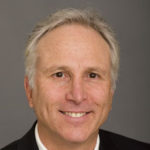 |
||
| Name: | Glenn Schiffbauer | ||
| Title: | Executive Director | ||
| Employer: | Santa Fe Green Chamber of Commerce | ||
| Bio: | Click here for bio | ||
| Sunday, June 4 | |||
| 11am | Food, Energy, Water Nexus |
Coronado Room | ARCSA, QWEL CEUs; AICP CMs available |
| Summary: | Do you know that our energy, water and food resources in New Mexico are very closely connected? What are these connections and how do they affect our environment? How can we maximize our scarce water resources? Come to this informative session and learn the most effective choices you can make to help conserve our resources. | ||
| Presenter: | 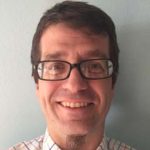 |
||
| Name: | Bill Eckman | ||
| Title: | Trainer | ||
| Employer: | Santa Fe Community College | ||
| Bio: | Click here for bio | ||
| Sunday, June 4 | |||
| 11am | Passive Rainwater Systems | Peralta Room | ARCSA, QWEL CEUs; AICP CMs available |
| Summary: | Fresh water is a vital, finite and limited resource. The most effective and economic water storage system that we have access to exists below our feet in the soil. Developing landscapes to infiltrate storm water into the soil is an effective tool in creating a drought-resilient community. Using storm water as a resource moves us away from desertification by design and towards a more abundant future. Join Jeremiah in a discussion of how a holistic design approach to hydrating our communities is possible! | ||
| Presenter: | 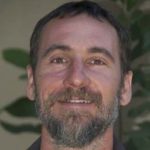 |
||
| Name: | Jeremiah Kidd | ||
| Title: | Director | ||
| Employer: | San Isidro Permaculture Inc. | ||
| Bio: | Click here for bio | ||
| Sunday, June 4 | ||||
| 11am | Santa Fe Green Building Code Update | O’Keeffe Room | ARCSA, QWEL CEUs; AICP CMs available | |
| Summary: | Santa Fe was an early-adopter of residential green building codes that addressed not just building energy use, but also water, embedded greenhouse gases in building materials, indoor air quality, lot design, and homeowner education. Now, with nearly 8 years of experience, the City, in consultation with the residential building community, has adopted major changes in the code to primarily focus on energy, water and indoor air quality using three performance standards and required components. The big news is: there’s no more checklist! Kim and Katherine will take you through the unique history of the program, how it has evolved, and how it may continue to evolve in the future. | |||
| Panelists: | 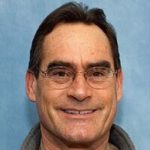 |
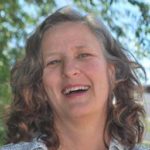 |
||
| Name: | Kim Shanahan | Katherine Mortimer | ||
| Title: | Executive Officer | Sustainable Land Use Supervisor | ||
| Employer: | Santa Fe Area Home Builders Association | City of Santa Fe | ||
| Bio: | Click here for bio | Click here for bio | ||
| Sunday, June 4 | |||
| 12:15pm | Conserving Water Through Soils |
Coronado Room | ARCSA, QWEL CEUs; AICP CMs available |
| Summary: | Vegetation planted around rain gardens presents an opportunity to remediate stormwater pollutants, diversify habitat, and improve community aesthetics in urban settings. In semi-arid regions where water resources are scarce however, it is unclear whether stormwater captured in these basins is sufficient to sustain plant growth without supplemental irrigation. Aaron will discuss how enhancements in soil moisture in rain gardens could potentially sustain vegetation for extended periods without precipitation. | ||
| Presenter: | 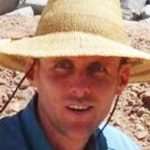 |
||
| Name: | Aaron Kauffman | ||
| Title: | Founder | ||
| Employer: | Southwest Urban Hydrology | ||
| Bio: | Click here for bio | ||
| Sunday, June 4 | |||
| 12:15pm | Active Rainwater Systems | Peralta Room | ARCSA, QWEL CEUs; AICP CMs available |
| Summary: | Can rainwater be used as our main water supply for our current water needs in human culture today? In most cases, yes! Rainwater, having fallen from the sky, is naturally distilled and does not contain many of the different chemicals that we use in our municipal water systems. It also is free of minerals and salts that come from underground water sources, has a lower pH, and contains traces of dissolved nitrogen so it works wonders for gardens! Join us for a discussion of different applications exclusively using rainwater as a source for simple, gravity-fed irrigation systems to complex potable and domestic water systems. | ||
| Presenter: |  |
||
| Name: | Reese Baker | ||
| Title: | Founder | ||
| Employer: | The Raincatcher Inc. | ||
| Bio: | Click here for bio | ||
| Sunday, June 4 | |||||
| 12:15pm | WERS: What is It and How Can It Drive Water Conservation? | O’Keeffe Room | ARCSA, QWEL CEUs; AICP CMs available | ||
| Summary: | This session will provide a general overview of the industry’s first water rating system: The Water Efficiency Rating Score (WERS)®; a predictive, performance-based approach to water efficiency. WERS is applicable to both new & existing single-family and multifamily residential properties. It can incorporate EPA’s WaterSense program and other water budgeting tools into the final results. Through the use of visual aids, attendees will gain an understanding of the elements of field data capture needed to derive a water rating and how properties can be compared using this tool. The session will also discuss how a water rating can be used as a regulatory tool, a financial incentive or as part of a green building program. This will give attendees a variety of implementation examples they can take back to their state and local communities, and/or elected officials, when looking to further the adoption of water conservation measures. | ||||
| Presenter: | 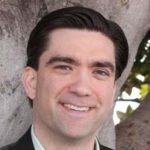 |
||||
| Name: | Mike Collignon | ||||
| Title: | Executive Director & Co-Founder | ||||
| Employer: | Green Builder® Coalition | ||||
| Bio: | Click here for bio | ||||
| Sunday, June 4 | |||
| 1:30pm | Plants for a Changing Climate | Coronado Room | ARCSA, QWEL CEUs; AICP CMs available |
| Summary: | The southwestern part of the United States is expected to undergo extreme temperature changes of the country during this century, due to the influences of climate change. These on-going changes will have drastic effects on the need for and availability of water in the southwest, especially through the growing season. This presentation will include a review of past climate patterns in New Mexico and how the climate is changing, with a focus on temperature and precipitation patterns. Impacts of these changes on the plant communities around us, both natural and man-made, will be considered. Criteria for plant selection in landscape applications will be discussed in light of these changes. | ||
| Presenter: |  |
||
| Name: | Tracy Neal | ||
| Title: | Consultant | ||
| Employer: | Self | ||
| Bio: | Click here for bio | ||
| Sunday, June 4 | |||
| 1:30pm | Greywater System Basics | Peralta Room | ARCSA, QWEL CEUs; AICP CMs available |
| Summary: | This session will cover the various types of greywater treatment as well as the pros and cons and the best applications for residential and commercial sites. Bob will also share the advantages of membrane bioreactor (MBR) and biological treatment using the Aqualoop process. He will discuss sizing of the Aqualoop application to small residential through large commercial scale treatment. Several case studies will show the Aqualoop in action and benefits of this system. | ||
| Presenter: | 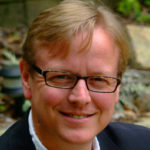 |
||
| Name: | Bob Drew | ||
| Title: | Founder | ||
| Employer: | EcoVie Environmental, LLC | ||
| Bio: | Click here for bio | ||
| Sunday, June 4 | |||
| 1:30pm | Water Rights in Northern New Mexico | O’Keeffe Room | ARCSA, QWEL CEUs; AICP CMs available |
| Summary: | New Mexico water rights law, water transfers, and state and local regulations are becoming increasingly integrated with land use decisions. This session will cover the highlights of a 4 hour New Mexico Water Law course prepared for the New Mexico Real Estate Commission and presented regularly to realtors and brokers. Basic legal concepts, the intersection of land and water regulations, and current hot topics relevant to the Santa Fe area and northern New Mexico will be reviewed. | ||
| Presenter: |  |
||
| Name: | Kyle Harwood | ||
| Title: | Partner | ||
| Employer: | Egolf + Ferlic + Harwood, LLC | ||
| Bio: | Click here for bio | ||
| Sunday, June 4 | |||
| 2:45pm | Drip Irrigation Basics | Coronado Room | ARCSA, QWEL CEUs; AICP CMs available |
| Summary: | Drip Irrigation Basics is an introduction to the water, time and money savings approach to watering. The course will introduce components of a drip system. It will teach basic installation techniques. Finally, the class will discuss drip irrigation design.
Drip irrigation is a simple way of watering, requiring few tools and skills. With a few basic concepts, anyone can install a simple system for the health and well-being of their garden. It is as simple as attaching a garden hose to a faucet, but it may require a little sunscreen. |
||
| Presenter: | 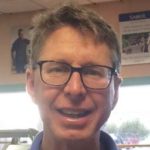 |
||
| Name: | Kelley Nace | ||
| Title: | Sales Manager | ||
| Employer: | The Firebird | ||
| Bio: | Click here for bio | ||
| Sunday, June 4 | |||
| 2:45pm | Blackwater Systems Basics |
Peralta Room | ARCSA, QWEL CEUs; AICP CMs available |
| Summary: | Let’s talk poop juice. Sewers are perennial streams in drylands. They carry water, biology, chemistry, and energy. Reusing this resource can give us food, fiber, fuel, microclimates, habitat, resiliency, and beauty. Sewage reuse is also an important tool for returning the excess carbon from the atmosphere to the soil where it came from. Drylands cover 40 % of the earth’s surface. That makes our sewage a critical contribution to the global art of managed photosynthesis. All of the CO2 in the atmosphere cycles thru plants every six years. The trick is in capturing the carbon and storing it in stable forms. Richard will discuss sewage treatment and reuse for all of this important work. | ||
| Presenter: |  |
||
| Name: | Richard Jennings | ||
| Title: | Designer & Project Manager | ||
| Employer: | Earthwrights Designs and Water Management Associates, Inc. | ||
| Bio: | Click here for bio | ||
| Sunday, June 4 | |||
| 2:45pm | Aamodt Settlement Agreement | O’Keeffe Room | ARCSA, QWEL CEUs; AICP CMs available |
| Summary: | Santa Fe County, the Pueblos of Nambe, Pojoaque, San Ildefonso and Tesuque, the State of New Mexico, the United States, and the City of Santa Fe entered into a Settlement Agreement, to resolve the Pueblos’ water rights claims. The Settlement Agreement will bring up to 4000 acre feet of new water into the Pojoaque Basin through the construction of a regional water system for both Pueblo and non-Pueblo water users. This session will review the settlement agreement and the construction project estimated at $253 million scheduled to begin in 2018 with completion in 2024. | ||
| Presenter: | 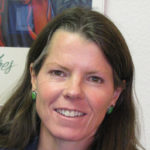 |
||
| Name: | Sandra Ely | ||
| Title: | Aamodt Project Manager | ||
| Employer: | Santa Fe County Utilities | ||
| Bio: | Click here for bio | ||
| Sunday, June 4 | |||
| 4pm – 5pm | Green Expo Hall Closes | Sweeney Ballroom | |
| Summary: | The Green Expo concludes. All 1-day exhibitors to break down their booths. | ||
| Sunday, June 4 | |||
| 5:30pm | Mayor’s Reception | Drury Plaza Hotel | |
| Summary: | Welcome remarks from Mayor Gonzales. | ||
| Presenter: |  |
||
| Name: | Javier Gonzales | ||
| Title: | Mayor | ||
| Employer: | City of Santa Fe | ||
| Bio: | Click here for bio | ||
| Monday, June 5 | |||
| 7:30am – 4pm | Next Generation Water Summit Registration/Check-in | ||
| Summary: | Attendees of the Summit can pick up their badge and bag at registration. | ||
| Monday, June 5 | |||||||
| 8:15am | Next Generation Water Summit Welcome | Sweeney Ballroom | |||||
| Summary: | Welcome remarks from Mike Collignon, Executive Director of the Green Builder® Coalition | ||||||
| Presenter: |  |
||||||
| Name: | Mike Collignon | ||||||
| Title: | Executive Director | ||||||
| Employer: | Green Builder® Coalition | ||||||
| Bio: | Click here for bio | ||||||
| Monday, June 5 | |||||||
| 8:30am | Keynote | Sweeney Ballroom | |||||
| Summary: | Ed Mazria will kick off the Next Generation Water Summit on Monday morning. He will demonstrate how water and energy are intertwined, how their footprint affects growth, and how attention to these relationships in the design process can help correct our current environmental trajectory. | ||||||
| Keynote Speaker: |  |
||||||
| Name: | Ed Mazria | ||||||
| Title: | Founder & CEO | ||||||
| Employer: | Architecture 2030 | ||||||
| Bio: | Click here for full bio | ||||||
| Monday, June 5 | |||||
| 9:45am | Builders, Developers & Architects | Panel: When Does Building Net-Zero Water Make Sense? | O’Keeffe Room | ARCSA, QWEL CEUs; AICP CMs available | |
| Summary: | The Net-Zero Water, Glorieta Freedom Ranch residence is the collaborative effort of Kathy and Brad Holian, teaming with designer/builder Faren Dancer, completed in 2013. The specific challenge of building in this remote location went beyond the typical off-grid considerations as there was no viable source of water. Water is needed for the family, horses, dogs, herbs, vegetables and orchard. Our panel will include further discussion on why net-zero water was chosen and how this was accomplished. | ||||
| Panelists: | 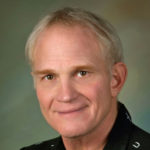 |
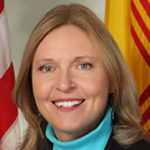 |
|||
| Name: | Faren Dancer | Kathy Holian | |||
| Title: | President | Commissioner | |||
| Employer: | Sundancer Creations Custom Builders | Santa Fe County | |||
| Bio: | Click here for bio | Click here for bio | |||
| Monday, June 5 | ||||||
| 9:45am | Water Professionals | Panel: Next Generation Water Professions | Coronado Room | ARCSA, QWEL CEUs; AICP CMs available | ||
| Summary: | Potable water has traditionally come from centralized systems which provide safe and clean water for potable and non-potable applications. However, with urgent challenges facing water resources, non-traditional water sources are now being integrated into water management practices. Water professionals are learning how to integrate safe and clean alternate water resources into the mix with resulting benefits of supplementing local municipal water supplies, giving relief to centralized systems and more independence to water end users. Each of the presenters brings experience from different perspectives on this emerging new water profession paradigm and the importance of working together. | |||||
| Panelists: | 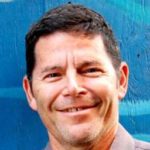 |
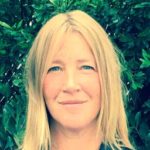 |
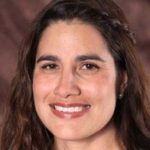 |
|||
| Name: | Neal Shapiro | Regina Hirsch | Christine Chavez | |||
| Title: | Watershed Management Program Coordinator | Founder | Water Conservation Manager | |||
| Employer: | City of Santa Monica | Sierra Watershed Progressive | City of Santa Fe | |||
| Bio: | Click here for bio | Click here for bio | Click here for bio | |||
| Monday, June 5 | ||||||
| 9:45am | Policy | Panel: Regulatory & Technical Barriers to the Adoption of Water Reuse | Peralta Room | ARCSA, QWEL CEUs; AICP CMs available | ||
| Summary: | Water reuse can be a viable and cost-effective water source. Whether it is rainwater, greywater or blackwater; all can be used on premises. Plumbing codes are now evolving to allow these alternative water sources to be plumbed and used. However, the codes do not cover all the various alternatives, nor have permitting agencies recognized the viability of these water resources. The technology is evolving, but still may limit where some water can be cost-effectively treated for any use. This session will discuss some of these barriers and what can be done to overcome them. | |||||
| Panelists: | 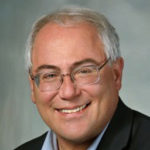 |
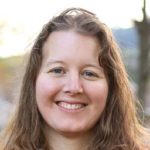 |
 |
|||
| Name: | Peter Ives | Michelle Maddaus | Bob Drew | |||
| Title: | Councilor | President | Founder | |||
| Employer: | City of Santa Fe | Maddaus Water Management | EcoVie Environmental, LLC | |||
| Bio: | Click here for bio | Click here for bio | Click here for bio | |||
| Monday, June 5 | ||||
| 11:25am | Builders, Developers & Architects | WaterSense for New Homes: Why Certify? | O’Keeffe Room | ARCSA, QWEL CEUs; AICP CMs available |
| Summary: | In 2006, the EPA established the WaterSense program to provide a national direction for water efficiency in the United States. In 2009, EPA expanded the program to include a whole home certification with WaterSense labeled homes. In addition to leveraging EPA’s highly successful product labeling program for high performing water efficient products, WaterSense labeled homes allows for whole-house building science approach to water efficiency. Meaning that WaterSense labeled homes and whole house certification can leverage a wider range of system design, performance techniques and criteria. This session will review the purpose, requirements, and structure of the WaterSense certification for homes. | |||
| Presenter: | 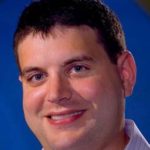 |
|||
| Name: | Jonah Schein | |||
| Title: | Technical Coordinator for Homes & Buildings | |||
| Employer: | EPA’s WaterSense Program | |||
| Bio: | Click here for bio | |||
| Monday, June 5 | |||||
| 11:25am | Water Professionals | Incremental Water Efficiency | Coronado Room | ARCSA, QWEL CEUs; AICP CMs available | |
| Summary: | Two California panelists will discuss projects in Santa Barbara and Ventura Counties and how to link onsite water conservation with regional water supply and drought resilience strategies for stream flow for rivers and freshwater ecology/riparian systems.
They will discuss how to scope and measure the individual and cumulative potential for geographically significant conservation projects. Based on the crucial “time value” of water in prioritized California fragile steelhead habitats, new projects are assessed and rated by their local instream flow benefits such as: on site recycled water opportunities, ornamental and agricultural irrigation best management strategies, Low Impact Development (LID) storm water infiltration, Water Conservation Management Best Management Practices (BMP) employment, and voluntary water right transactions such as acquisition, lease, and donations. Panelists will link the opportunity to connect onsite water savings to fishery benefits. |
||||
| Panelists: | 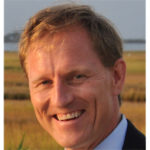 |
 |
|||
| Name: | Tom Hicks | Regina Hirsch | |||
| Title: | Partner | Founder | |||
| Employer: | Hicks Law | Sierra Watershed Progressive | |||
| Bio: | Click here for bio | Click here for bio | |||
| Monday, June 5 | |||||
| 11:25am | Policy | Lessons Learned from the Aamodt Settlement Agreement | Peralta Room | ARCSA, QWEL CEUs; AICP CMs available | |
| Summary: | The Aamodt Adjudication of water rights between Santa Fe and Espanola, and corresponding Settlement Agreement, are the result of over 15 years of negotiation over rules, regulations and court orders aimed to manage a scarce resource within a complex watershed. The Settlement Agreement limits groundwater pumping, with the goal to increase the surface water availability and long term sustainability of water in the basin. The technical administration of the Aamodt Adjudication and Settlement Agreement terms is multifaceted, and involves
This presentation will provide some observations on how federal/pueblo/state and local governments manage groundwater reductions to meet surface water increases and sustainability goals. What happens when those goals meet confounding and sometimes contradictory government policies and the difficulties of a complex natural system and a stakeholder public that has never experienced regulation like this for an essential utility service? |
||||
| Panelists: |  |
 |
|||
| Name: | Kyle Harwood | Sandra Ely | |||
| Title: | Partner | Aamodt Project Manager | |||
| Employer: | Egolf + Ferlic + Harwood, LLC | Santa Fe County Utilities | |||
| Bio: | Click here for bio | Click here for bio | |||
| Monday, June 5 | |||
| 12:30pm | Networking Lunches | Sweeney Ballroom | |
| Summary: | Each table will have a specific discussion topic. You and your tablemates will have the chance to meet and network on a topic of your interest. | ||
| Monday, June 5 | |||||
| 1:45pm | Builders, Developers & Architects | Rainwater: Inside & Out | O’Keeffe Room | ARCSA, QWEL CEUs; AICP CMs available | |
| Summary: | During this session, you will learn how to use rainwater inside the house. Charlee will provide an overview on how to convert rainwater to potable water for inside use. Doug will provide an overview on what is required to use rainwater for toilet flushing. The session will provide information on how to expand the use of rainwater from solely outdoor irrigation use to indoor use. | ||||
| Panelists: |  |
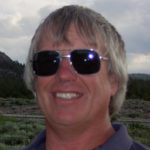 |
|||
| Name: | Doug Pushard | Charlee Myers | |||
| Title: | Founder | Owner | |||
| Employer: | Harvest H2O | Mountain & Mesa Construction | |||
| Bio: | Click here for bio | Click here for bio | |||
| Monday, June 5 | |||||
| 1:45pm | Water Professionals | Deep Dive into WERS | Coronado Room | ARCSA, QWEL CEUs; AICP CMs available | |
| Summary: | Do you have a question about the Water Efficiency Rating Score (WERS)®? For instance, is the presence of a pool a penalty? What do you do if the property doesn’t have a dishwasher? Will an irrigation controller help or hurt a property’s WERS? How does WERS calculate clothes washer usage? No question is too tough, and any and all questions will be addressed at this session featuring the top two WERS experts. This session is not just for WERS Verifiers; it’s for anyone wanting to dive deep into WERS. | ||||
| Panelists: |  |
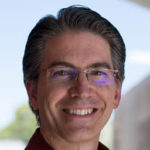 |
|||
| Name: | Laureen Blissard | David Dunlap | |||
| Title: | Technical Director | Director of Operations | |||
| Employer: | Green Builder® Coalition | Baywa r.e. Solar Systems LLC | |||
| Bio: | Click here for bio | Click here for bio | |||
| Monday, June 5 | ||||
| 1:45pm | Policy | Land Use & Water Conservation | Peralta Room | ARCSA, QWEL CEUs; AICP CMs available |
| Summary: | In December 2015, the Colorado Water Conservation Board completed its first state water plan: Colorado’s Water Plan. The land use and water nexus was included in the long term planning and policy. This was a controversial idea. Colorado is looking at a water supply-demand gap of upwards of 600,000 acre feet by 2050. This is a monumental issue.
This session will explore how land use and water policies have evolved over the last 5 years from recent legislation, research, training and implementation of strategies for Colorado’s Water Plan. |
|||
| Presenter: |  |
|||
| Name: | Kevin Reidy | |||
| Title: | State Water Conservation Specialist | |||
| Employer: | Colorado Water Conservation Board | |||
| Bio: | Click here for bio | |||
| Monday, June 5 | |||||
| 2:45pm | Builders, Developers & Architects | The 5 Ws of Alternate Water Sources |
O’Keeffe Room | ARCSA, QWEL CEUs; AICP CMs available | |
| Summary: | Alternative water is available on every site and must be dealt with. Stormwater, greywater, blackwater, rainwater can all be used. It can be a low-cost and easy solution to onsite water requirements. Some of it can meet your retention requirements, but also lower your WERS if done properly. Others sources can be used inexpensively to increase the sustainability of the property and reduce your WERS. But what should be done first? What is the least expensive? What is the easiest? What is possible? This panel will cover all the various alternative water sources and what can be done when and where. | ||||
| Panelists: |  |
 |
|||
| Name: | Doug Pushard | Michelle Maddaus | |||
| Title: | Founder | President | |||
| Employer: | Harvest H2O | Maddaus Water Management | |||
| Bio: | Click here for bio | Click here for bio | |||
| Monday, June 5 | ||||
| 2:45pm | Water Professionals | WaterSense at 10: The Past, Present & Future | Coronado Room | ARCSA, QWEL CEUs; AICP CMs available |
| Summary: | Over ten years ago, Administrator Johnson of the Environmental Protection Agency responded to requests from impacted stakeholders by creating the WaterSense program. Since that time, WaterSense and its partners have helped the American people save more than 1.5 trillion gallons of water and more than $32 billion in water and energy bills. The program might often be thought of as a little sister to the agency’s older, larger, and better funded ENERGY STAR program; but at ten years old, WaterSense is no baby anymore. This session will discuss the roots of the WaterSense program, look at the program’s accomplishments and challenges over the course of its first ten years, and discuss where the program might be going in the future. | |||
| Presenter: |  |
|||
| Name: | Jonah Schein | |||
| Title: | Technical Coordinator for Homes & Buildings | |||
| Employer: | EPA’s WaterSense Program | |||
| Bio: | Click here for bio | |||
| Monday, June 5 | |||||
| 2:45pm | Policy | Private/Public Partnerships: Making Water Conservation Work | Peralta Room | ARCSA, QWEL CEUs; AICP CMs available | |
| Summary: | Water and utility companies are implementing water conservation programs. Non-profits can play a helpful role in these programs. Cynthia, with the WaterNow Alliance, and Yvette, with the New Mexico Water Collaborative, will describe the roles their organizations have provided to water agencies to assisting agencies in building successful water conservation programs. | ||||
| Panelists: |  |
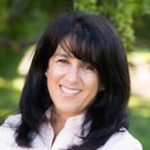 |
|||
| Name: | Yvette Tovar | Cynthia Koehler | |||
| Title: | Executive Director | Executive Director | |||
| Employer: | The New Mexico Water Collaborative | WaterNow Alliance | |||
| Bio: | Click here for bio | Click here for bio | |||
| Monday, June 5 | ||||
| 3:45pm | Builders, Developers & Architects | No Water, No Build | O’Keeffe Room | ARCSA, QWEL CEUs; AICP CMs available |
| Summary: | In the early 2000’s, Las Vegas, Nevada was faced with an extraordinary challenge: How do you sustain 100,000 new residents every year in the face of an extraordinary drought?
Doug Bennett, Conservation Manager for the Southern Nevada Water Authority will explain how his water-challenged city was able to meet the needs of more than a half million new residents through collaboration with homebuilders. The Las Vegas approach included both new development codes, as well as adoption of a voluntary labeling program for water-efficient homes. Since 2003, per capita water use in the Las Vegas region has declined 37%, and builders have created more than 10,000 Water Smart Homes. Bennett will explain how the development community and water officials found common ground to keep the community thriving through more than 15 years of drought. |
|||
| Presenter: | 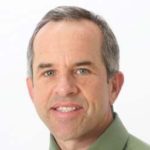 |
|||
| Name: | Doug Bennett | |||
| Title: | Conservation Manager | |||
| Employer: | Southern Nevada Water Authority (SNWA) | |||
| Bio: | Click here for bio | |||
| Monday, June 5 | ||||
| 3:45pm | Water Professionals | The Power of Commercial Water Budgeting | Coronado Room | ARCSA, QWEL CEUs; AICP CMs available |
| Summary: | This session will focus on the advantages and approaches to water budgeting on both a single-building scale and as a master planning tool using various water budget approaches. The session will include how to assess potential sources for supply such as rainwater, greywater, blackwater, condensate, cooler blowdown, and groundwater. Then we will discuss how to appropriately match them to project demands for a variety of uses such as water features, toilet flushing, irrigation, and even potable use. Finally, case studies and examples of treatment systems, focusing on natural treatment technologies, will be shared to convey how the water budgets can be successfully implemented on a range of scales. | |||
| Presenter: | 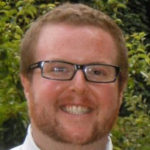 |
|||
| Name: | Justin Lyon | |||
| Title: | Senior Associate Civil & Environmental Engineer | |||
| Employer: | Biohabitats | |||
| Bio: | Click here for bio | |||
| Monday, June 5 | |||||
| 3:45pm | Policy | Stormwater as a Resource in Western States | Peralta Room | ARCSA, QWEL CEUs; AICP CMs available | |
| Summary: | The City of Santa Fe’s attitude towards stormwater has evolved over its 400-year history. Melissa will discuss the past, present, and future of Santa Fe’s relationship to stormwater, including an in-the-field account of the city’s Arroyo Chamisos project, a real-time forecast of Santa Fe’s stormwater planning efforts, and a detailed description of a growing system of rain gardens along the banks of the fabled Santa Fe.
Throughout the United States rising population demand is using freshwater supplies faster than can be replenished resulting in short-term deficits and long-term unreliability. Neal will discuss how climatic variation and other variables make water quality and storage more challenging. The solution is to grow the supply pie in a sustainable way to keep pace with demand while also managing water demand to be as efficient as technically possible. People are looking to decentralized, non-potable systems to supplement municipal water, and reduce the need for potable water for non-potable purposes. |
||||
| Panelists: |  |
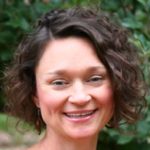 |
|||
| Name: | Neal Shapiro | Melissa McDonald | |||
| Title: | Watershed Management Program Coordinator | River & Watershed Coordinator | |||
| Employer: | City of Santa Monica | City of Santa Fe | |||
| Bio: | Click here for bio | Click here for bio | |||
| Monday, June 5 | |||
| 6pm | Networking Event | Jean Cocteau Cinema |
Ticket Required |
| Summary: | There will be appetizers and drinks for guests to enjoy ahead of the film screening. | ||
| 7pm | Film Screening – “Beyond the Mirage” | ||
| Summary: | We will view the 1-hour film, and then hold a brief, post-film discussion. | ||
| Tuesday, June 6 | |||
| 7:30am – 3pm | Next Generation Water Summit Registration/Check-in | ||
| Summary: | Attendees of the Summit can pick up their badge and bag at registration. | ||
| Tuesday, June 6 | |||||||
| 8:30am | Keynote | Sweeney Ballroom | |||||
| Summary: | Mary Ann Dickinson will be sharing information on the Alliance for Water Efficiency’s Net Blue Ordinance initiative. Net Blue is a collaborative initiative that developed a model ordinance that communities can tailor and customize to create a water demand offset approach meeting local needs. It promotes water-neutral development in water-scarce regions that otherwise might not be able to grow. | ||||||
| Keynote Speaker: |  |
||||||
| Name: | Mary Ann Dickinson | ||||||
| Title: | President & CEO | ||||||
| Employer: | Alliance for Water Efficiency | ||||||
| Bio: | Click here for bio | ||||||
| Tuesday, June 6 | |||||
| 9:45am | Builders, Developers & Architects | Panel: Integrated Design Process for Water | O’Keeffe Room | ARCSA, QWEL CEUs; AICP CMs available | |
| Summary: | Water is of critical importance to a finished building. However, many times water is not discussed in the design process. It is brought into the discussion almost as an afterthought. This panel will focus on why and how this is changing and the impact of this change. As will be discussed in this panel, water if properly planned in the beginning can have a major impact on plans and also save money. | ||||
| Panelists: |  |
 |
|||
| Name: | Bill Roth | Justin Lyon | |||
| Title: | Owner | Senior Associate Civil & Environmental Engineer | |||
| Employer: | Modern Design + Construction Inc. | Biohabitats | |||
| Bio: | Click here for bio | Click here for bio | |||
| Tuesday, June 6 | |||||
| 9:45am | Water Professionals | Panel: Prescriptive vs. Performance-Based Water Conservation | Coronado Room | ARCSA, QWEL CEUs; AICP CMs available | |
| Summary: | To date, prescriptive programs have provided the path to residential water efficiency. EPA’s WaterSense, Florida WaterStar and Southern Nevada Water Authority’s Water Smart Home Program are three programs that are well-established, whole property, prescriptive water efficiency programs. There are also regulatory measures like MWELO in California, or jurisdictions that require WaterSense fixtures indoors.
The industry is starting to see the next generation of water efficiency programs, with the emergence of performance-based approaches. The Water Efficiency Rating Score (WERS)® and Build Green New Mexico’ Indoor Water Efficiency Rating (WEiR) are both in the marketplace today. Such programs allow freedom of design and product choice, while still reaching water efficiency goals and targets. As the building industry starts to become more aware of these innovative programs, they will look to the water efficiency industry for information and guidance. The industry needs to understand these two common yet different approaches to residential water efficiency in order to be effective in enabling the industry to grow despite the challenges of water conservation. |
||||
| Panelists: |  |
 |
|||
| Name: | Doug Bennett | Mike Collignon | |||
| Title: | Conservation Manager | Executive Director & Co-Founder | |||
| Employer: | Southern Nevada Water Authority (SNWA) | Green Builder® Coalition | |||
| Bio: | Click here for bio | Click here for bio | |||
| Tuesday, June 6 | ||||||
| 9:45am | Policy | Panel: Making Regional Water Groups Work | Peralta Room | ARCSA, QWEL CEUs; AICP CMs available | ||
| Summary: | This panel will focus on the pluses and minuses of regionalizing water management. Water does not follow geographic borders. Watersheds typically serve multiple water agencies. Water agencies typically focus on the closest water sheds and what they can control. It is often necessary to partner with adjacent water agencies to increase water security or share costs for expensive infrastructure projects. Well planned and executed water conservation programs and policies in a shared watershed with several water agencies may have greater success, ensuring long-term water. | |||||
| Panelists: | 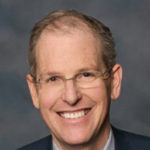 |
 |
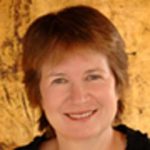 |
|||
| Name: | Peter Wirth | Peter Ives | Denise Fort | |||
| Title: | State Senator | Councilor | Professor of Law | |||
| Employer: | New Mexico State Senate | City of Santa Fe | Univ. of New Mexico School of Law | |||
| Bio: | Click here for bio | Click here for bio | Click here for bio | |||
| Tuesday, June 6 | ||||
| 11:15am | Builders, Developers & Architects | Water Efficiency in the National Green Building Standard |
O’Keeffe Room | ARCSA, QWEL CEUs; AICP CMs available |
| Summary: | The National Green Building Standard (NGBS), also known as ICC-700, has a chapter on water conservation whereby builders can accumulate points for prescriptive practices employed as they seek to achieve Bronze, Silver, Gold, or Emerald levels. None of those levels of achievement tell a builder or homeowner exactly how many gallons are expected to be saved. Now there are efforts underway to change the 2018 version of the NGBS by including a performance option that would provide a numerical WERS equivalency for each level. This concept happens to be in-line with a recently adopted provision of the National Association of Home Builders’ policy on water conservation. Kim Shanahan, a member of the Task Group seeking to modify the water chapter of the 2018 NGBS, and as the primary author of the NAHB policy directive, will speak on the status of those efforts. | |||
| Presenter: |  |
|||
| Name: | Kim Shanahan | |||
| Title: | Executive Officer | |||
| Employer: | Santa Fe Area Home Builders Association | |||
| Bio: | Click here for bio | |||
| Tuesday, June 6 | ||||
| 11:15am | Water Professionals | Basic Plant Identification: Tips & Tricks | Coronado Room | ARCSA, QWEL CEUs; AICP CMs available |
| Summary: | Linking a plant or a landscape to a specific landscape water use provides a way to efficiently manage water resources in urban environments. Despite the importance of this strategy to sustaining water resources for future generations, information on this topic is scant. In this presentation, you will learn about common landscape plants and their associated water use. Information on how to determine a desert urban landscape type and associate that landscape type with a specific landscape water budget will also be discussed. | |||
| Presenter: |  |
|||
| Name: | Rolston St. Hilaire | |||
| Title: | Professor and Dept. Head | |||
| Employer: | New Mexico State University | |||
| Bio: | Click here for bio | |||
| Tuesday, June 6 | |||||
| 11:15am | Policy | Case Study: Santa Fe’s Adoption of WERS | Peralta Room | ARCSA, QWEL CEUs; AICP CMs available | |
| Summary: | Katherine and David will share the process that went into the adoption of the Water Efficiency Rating Score (WERS)® tool in support of the City of Santa Fe moving to a performance based Green Building code standard. The tool is now used as part of the City of Santa Fe’s requirement to get a building permit for new single-family residential construction. The tool’s development was coordinated with the City to ensure it worked as a code requirement and to ensure that the City had permitting processes to allow a wide range of water conservation approaches. This new approach is a model that can be used by jurisdictions that don’t have authority over building codes but can adopt policies and programs that drive energy and water efficiency in new construction. | ||||
| Panelists: |  |
 |
|||
| Name: | Katherine Mortimer | David Dunlap | |||
| Title: | Sustainable Land Use Supervisor | Director of Operations | |||
| Employer: | City of Santa Fe | Baywa r.e. Solar Systems LLC | |||
| Bio: | Click here for bio | Click here for bio | |||
| Tuesday, June 6 | |||
| 12:15pm | Networking Lunches | Sweeney Ballroom | |
| Summary: | Each table will have a specific discussion topic. You and your tablemates will have the chance to meet and network on a topic of your interest. | ||
| Tuesday, June 6 | ||||
| 1:30pm | Builders, Developers & Architects | Water Efficiency in a Single-Family Residence | O’Keeffe Room | ARCSA, QWEL CEUs; AICP CMs available |
| Summary: | This session will provide information on performing a Water Efficiency Rating Score (WERS)® on a new or existing home. The discussion will include both the preliminary and the final scores, as well as how it is submitted for the New Mexico Green Build Tax Credit. Find out how the tool can be used to evaluate water reuse strategy alternatives, the impact on the water efficiency of a home, and the general costs for these changes. | |||
| Presenter: |  |
|||
| Name: | Steve Onstad | |||
| Title: | Managing Member | |||
| Employer: | EverGreen Building Solutions, LLC | |||
| Bio: | Click here for bio | |||
| Tuesday, June 6 | ||||
| 1:30pm | Water Professionals | Stormwater Analysis with WERS | Coronado Room | ARCSA, QWEL CEUs; AICP CMs available |
| Summary: | The Water Efficiency Rating Score (WERS)® provides a method of rating a home’s water use. WERS evaluates reuse options for rainwater, greywater and blackwater. WERS also provides a method to calculate how much stormwater is kept onsite. The intent of this presentation is to show how this stormwater analysis can be performed with the WERS tool. | |||
| Presenter: |  |
|||
| Name: | Doug Pushard | |||
| Title: | Founder | |||
| Employer: | Harvest H2O | |||
| Bio: | Click here for bio | |||
| Tuesday, June 6 | ||||
| 1:30pm | Policy | Customer-side Water Leak Detection without AMI | Peralta Room | ARCSA, QWEL CEUs; AICP CMs available |
| Summary: | Customer-side water leaks represent an ongoing source of concern to our community. Customers may experience a high water bill, and potentially substantial damage to his/her property with expensive repair costs. The water utility spends significant customer service and operator hours investigating leaks and calculating bill adjustment. Water resource managers and conservationist are concerned by the loss of this limited resource. Water utilities with costly Automated Meter Infrastructure (AMI) technology can put daily meter reading information and high-use alerts into the hands of customers, enabling them to address customer-side leaks faster. However, due to the significant capital investment, AMI is out-of-reach for many smaller utilities. Santa Fe County Water Utility partnered with the WaterNow Alliance and community stakeholders to investigate the feasibility of customer-side leak-detection technology paired with policies that address the needs of the customers and the utility, while minimizing the loss of precious water resources. | |||
| Presenter: | 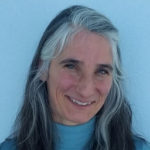 |
|||
| Name: | Claudia Borchert | |||
| Title: | Sustainability Manager | |||
| Employer: | Santa Fe County | |||
| Bio: | Click here for bio | |||
| Tuesday, June 6 | ||||
| 2:30pm | Builders, Developers & Architects | Saving Water, One Acre-Foot at a Time | O’Keeffe Room | ARCSA, QWEL CEUs; AICP CMs available |
| Summary: | Saving water is always in season. With multi-family buildings, there are many, many ways to achieve large water savings. In this session, Bill will cover a planned multifamily development and review the major water savings that can be obtained by incorporating water in the early stages of planning. If done properly, the potential costs of these conservation measures can be offset through cost reductions in other areas. | |||
| Presenter: |  |
|||
| Name: | Bill Roth | |||
| Title: | Owner | |||
| Employer: | Modern Design + Construction Inc. | |||
| Bio: | Click here for bio | |||
| Tuesday, June 6 | |||||
| 2:30pm | Water Professionals | WERS: Today & Tomorrow | Coronado Room | ARCSA, QWEL CEUs; AICP CMs available | |
| Summary: | This session will review how and where the WERS Program is being used today to assist homebuilders and homeowners with real data on water efficiency. Then, we’ll look down the road to see where the program is expanding geographically. Finally, we’ll get out the crystal ball to see which features are being evaluated for the future. | ||||
| Panelists: |  |
 |
|||
| Name: | Laureen Blissard | Mike Collignon | |||
| Title: | Technical Director | Executive Director & Co-Founder | |||
| Employer: | Green Builder® Coalition | Green Builder® Coalition | |||
| Bio: | Click here for bio | Click here for bio | |||
| Tuesday, June 6 | ||||
| 2:30pm | Policy | Large Scale Water Conservation: Lessons Learned | Peralta Room | ARCSA, QWEL CEUs; AICP CMs available |
| Summary: | The Bay Area Water Supply and Conservation Agency (BAWSCA) provides regional water supply planning, resource development and conservation program services for 26 cities, water districts and private water utilities in the San Francisco Bay Area. BAWSCA’s 26 member agencies serve over 1.7 million residents and over 40,000 commercial, industrial and institutional customers in three counties.
This session on water conservation program success will cover invaluable lessons learned in the following areas: – Suggestions on how to design water conservation programs for your service area. – Four questions to address before creating programs. – How successes can translate to other areas. |
|||
| Presenter: | 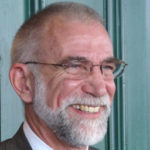 |
|||
| Name: | Art Jensen | |||
| Title: | CEO (retired) | |||
| Employer: | Bay Area Water Supply and Conservation Agency | |||
| Bio: | Click here for bio | |||
| Tuesday, June 6 | |||
| 3pm | Expo Hall Closes | Sweeney Ballroom | |
| Summary: | The exhibit booths will close. All 3-day exhibitors to break down their booths. | ||
| Tuesday, June 6 | |||
| 3:30pm | Closing Panel | Sweeney Ballroom | |
| Summary: | The closing panel will feature a few of the Summit presenters. They will help bring the highlights from each track to all attendees for further discussion. It will also allow us all to focus on next steps. | ||
2018 Next Generation Water Summit
If you would like to present at the 2018 Next Generation Water Summit, please submit your contact information and proposed session title here.
